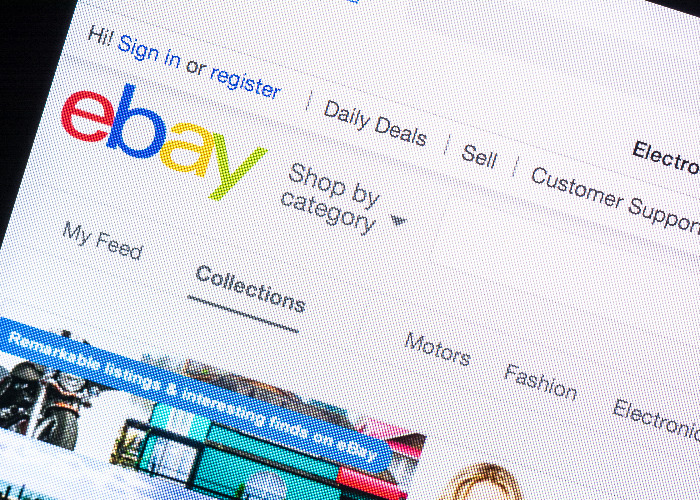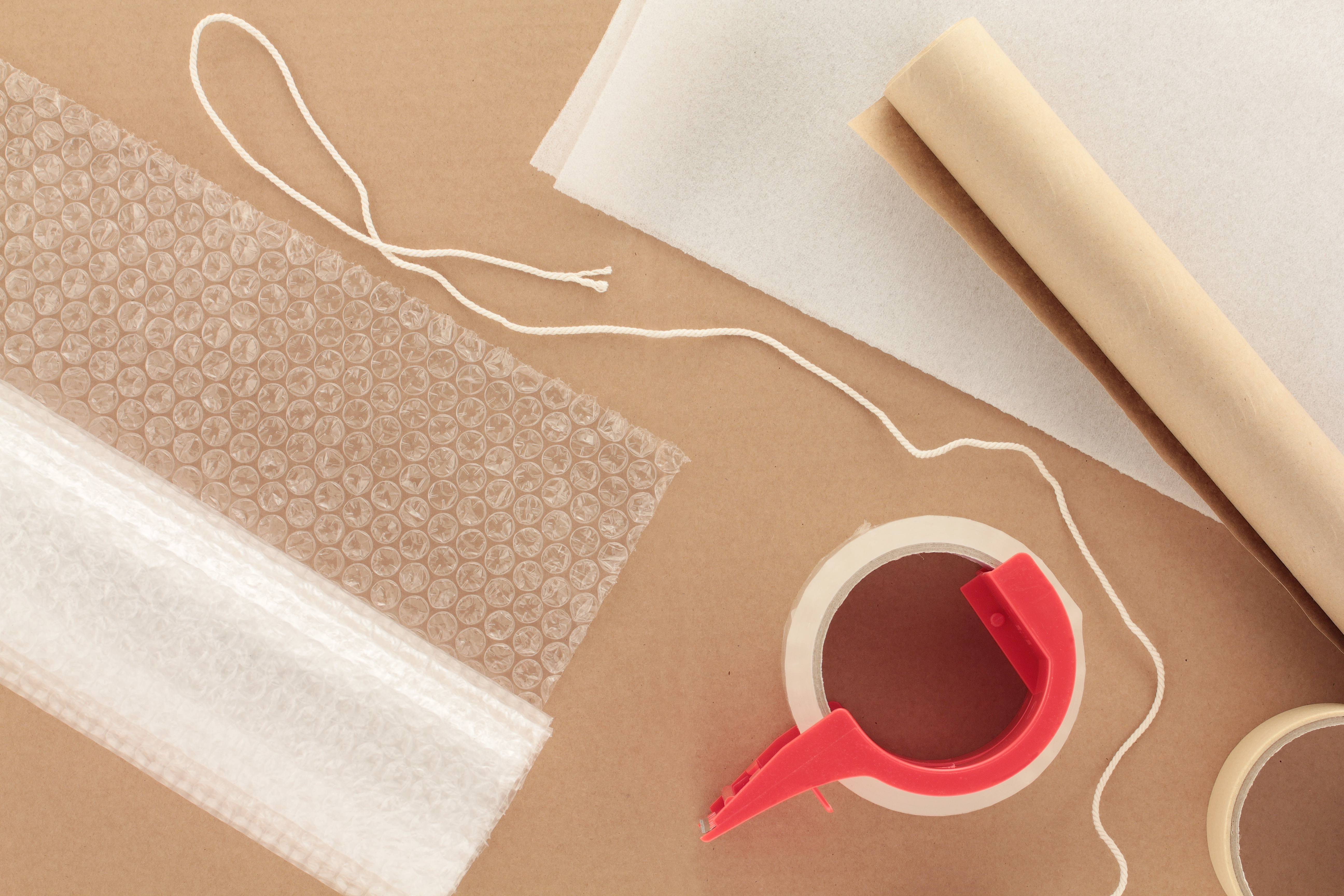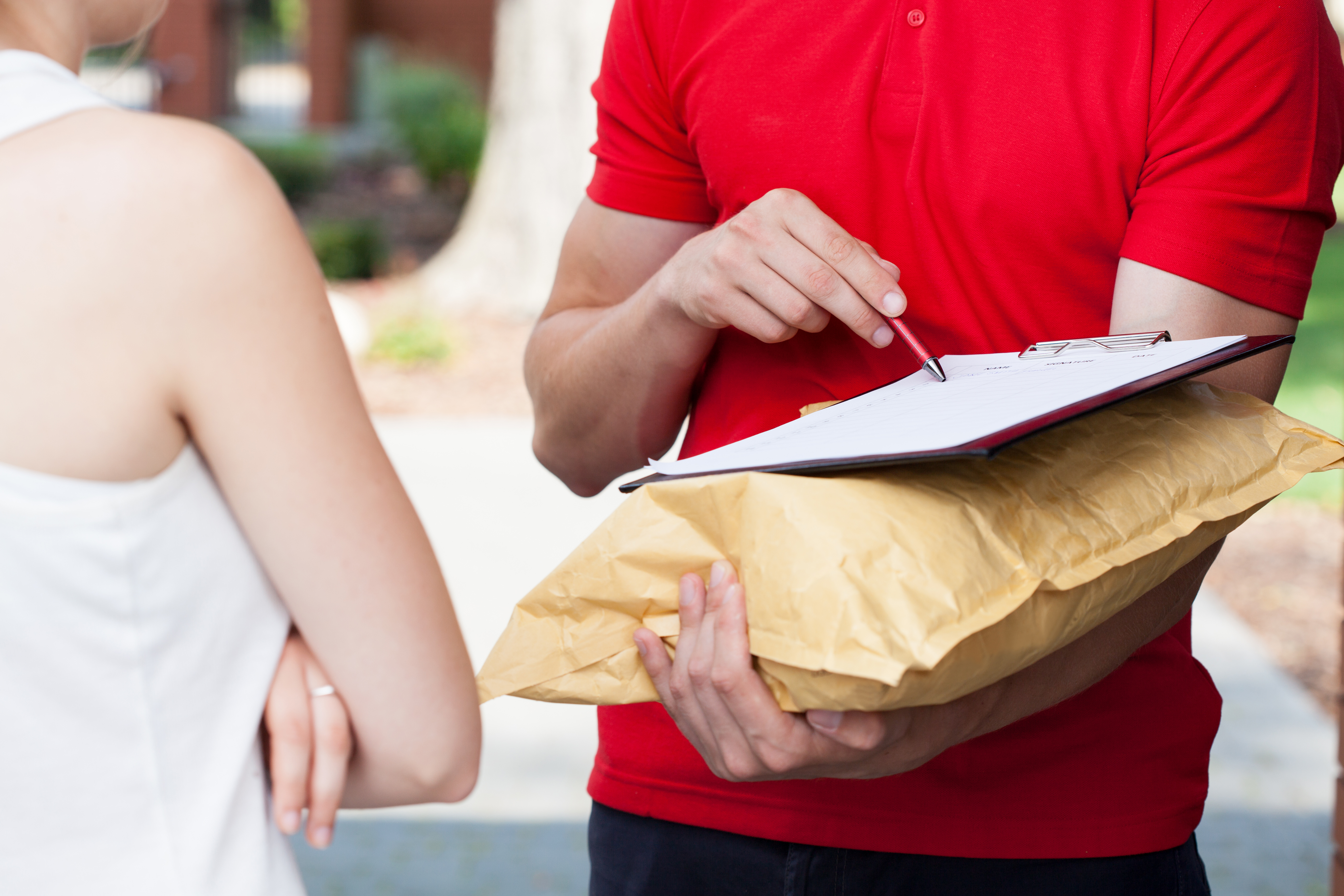How to make money by selling on eBay

Selling on eBay is simple – and you'd be amazed what people are willing to pay for! Here, we provide simple tips to help you get the best price for all the things you no longer wanted anyway.
Sections
- Make clear-outs routine (and sell ANYTHING)
- Find the top selling items
- List up to 1,000 items a month free
- Beat final value fees
- End auctions on a Sunday
- List for as long as you can
- Work on your listing title
- Learn the lingo
- Write a detailed description
- Choose your words carefully
- Take decent pictures
- Think seasonally
- Go global
- Communicate with buyers
- Never bid on your own auctions
- Charge for postage accurately
- Save on packaging
- Dodge PayPal fees
- Build up your feedback
- Post to the PayPal-listed address
- Get proof of delivery
- Fight back against dodgy buyers
- Don’t forget about tax
- Consider the alternatives
- What are your tips?
Make clear-outs routine (and sell ANYTHING)
Selling on eBay is a great way to declutter your home and earn some extra cash.
And if you think you’ve got nothing worth selling, think again.
According to research by My Favourite Voucher Codes, there’s a surprising demand for ‘rubbish’ items such as empty perfume bottles, empty candle jars and even toilet roll tubes on eBay.
The site found that almost 2,000 perfume bottles were sold over a three-month period, raking in an average of £4.33 apiece. Empty jars sold for £5.79 on average.
Even the humble loo roll tube was popular over that period as parents wanted them for kids’ craft projects – with batches selling for a couple of quid.
So, whether you’ve just given your home the full Marie Kondo-inspired clear-out treatment or simply sifted through the recycling bins, you can make some cash by shifting unwanted junk.
Remember to do regular clear-outs
Getting rid of old stuff doesn’t have to be a one-off event.
Keep tabs on items gathering dust and make clear-outs part of your routine. If you haven’t used something in a year or more, it’s probably time to get rid of it.
eBay is a great place to sell just about anything. So, don’t relegate items to the bin and remember – one man’s junk is another man’s treasure!
Find the top selling items
If you need inspiration about which of your items are likely to sell well, you can quickly see what’s hot with Goofbid’s Most Popular Items tool.
You just need to type in a search term to generate a list of relevant auctions with the most watchers and bids.
List up to 1,000 items a month free
At eBay, sellers get to list up to 1,000 items for free each month (apart from listings in the Property, Motors or Classified Ads categories).
After using your free allocation, you’ll be charged 35p for each item listed.
If you’ve got over a thousand items to sell, you might want to spread them out over a month or two to save on fees.
You won’t just be saving money by spreading out when you sell items as this could also help you manage the selling process, including packaging and posting items.
Another way to avoid this fee is to watch out for free listing day promotions, which will allow you to list as many items as you want for no charge within a certain period.
eBay normally sends out an email to let users know about these events.
Beat final value fees
Sellers also have to pay eBay a ‘final value fee,’ which is 12.8% of the final transaction value, including postage.
Sometimes eBay runs promotions where you can save on final value fees when you list over a certain period, so keep an eye out.
If your buyer chooses to pay via PayPal, you will have to pay PayPal fees on the transaction. This is usually 14.-3.4% of the total sale price plus 20p per transaction.
End auctions on a Sunday
You may have worked into the early hours to list all your items but if you end the auction at the same time, buyers are unlikely to be around to battle it out for your goods. 
Ending auctions early in the morning during the week or during business working hours is a bad move as buyers aren’t generally online.
And you're almost certainly going to lose out on a decent final selling price if you end an auction at 3am on a Tuesday.
eBay tends to get most of its traffic at weekends, so this would be an ideal time to end your auction. Sunday afternoon tends to work best or even a Bank Holiday Monday.
List for as long as you can
The longer your item is advertised, the more chance there is of it being seen.
eBay allows you to list auctions for one, three, five, seven or 10 days. So, if you’re not in a rush, go for 10 days to give it the most exposure.
Buy-it-now listings can go live on eBay for three, five, seven, 10 or up to 30 days at a time.
Again, if you aren’t in a hurry, try a 30-day listing to make the maximum impact with buyers.
Work on your listing title
You need to use keywords people will search for in the title of your auction in order to get your listing seen and high up in search results.
‘Toy jail’ might come up in a few searches but ‘Fisher Price Batman Gotham city jail’ will definitely get you more views.
Be specific, clear and precise by including things such as the brand, size, colour and product name.
Goofbid's free eBay Pulse tool may be able to help you find effective keywords by revealing the most popular search terms buyers use (ordered by category).
A good way to think about it is to try to imagine what you would search for if you were looking for the item yourself.
Or take a look at what other people have used in the title of a similar listing – especially those that have lots of bids!
Whatever you do, make sure you check the spelling. People lose out by misspelling keywords in their title so possible buyers don’t ever come across the item in question.
While you should aim for no errors when selling a product, websites like Fat Fingers can flag listings with spelling mistakes, which could possibly lead to a bargain for potential buyers.
Learn the lingo
eBay is full of acronyms you need to get to know.
Here are a few of the most commonly used terms:
- BN: Brand new
- BNWT: Brand new with tags
- BNIB: Brand new in box
- BIN: Buy it now
- VGC: Very good condition
- NWOT: New without tags
- NWOB: New without box
- HTF: Hard to find
- NR: No reserve price
- VTG: Vintage
Sellers tend to use some of these abbreviations to save on the character limit on listing titles.
You might want to use them too, so you can fill the title with better keywords to help your listing get seen.
Don’t get carried away though as newbies may not have a clue what you’re on about.
Write a detailed description
There’s nothing worse than getting to a listing and finding a lack of information. It makes the buyer work harder by having to ask questions and wait for an answer. Most don’t even bother to go that far.
A good description will have a lot of details, including the brand, item specifics, model numbers, size dimensions, style, colour – and even why you’re selling the item.
While you want to try to make your item sound attractive to buyers, don’t lie. Your listing should provide an accurate description of the item.
While it might be tempting to embellish the truth, a piece of clothing that you’ve described as ‘like new’ that turns up with stains isn’t going to go down well.
You'll probably get a dose of negative feedback and the buyer has the right to get their money back under the eBay Money Back Guarantee.
Choose your words carefully
Researchers from Birmingham City University revealed they trawled through over 68,000 sold auction listings on eBay to try and work out which words used in the descriptions made sellers the most money.
The study, which analysed 15 million words, found definite patterns in language that significantly changed the price buyers could expect to pay for similar goods.
For example, ‘men’s’ watches sold for an average of £30 while ‘gents’ went for £70 – more than twice as much. Fragrances labelled ‘genuine’ fetched £21 on average but ‘authentic’ ones managed to bag sellers £34.
According to the research, a watch with ‘resistance’ could expect to attract nearly 50% more than a ‘resistant’ watch.
Researchers Andrew Kehoe and Matt Gee from Birmingham City University’s School of English were behind the study.
"We've found that the language used in eBay descriptions really does have an impact on whether items sell and for how much,” commented Kehoe.
So, it will pay to take some time and think about the language you are using in the description and title of your listing.
Take decent pictures
Clear images are likely to attract more buyers. So, try and take pictures of your items on a blank backdrop using natural light.
Also, make sure the item is in tip-top condition – that might mean getting out the iron or giving a few things a polish before taking your snaps.
With designer products like UGG boots and expensive technology such as an iPad, it’s good to have a picture proving they work or are genuine, rather than a generic picture from the web.
eBay usually allows you to add up to 12 images to a listing for free, so you should be able to highlight all the details of what you are selling, including any defects or damage.
Think seasonally
When selling your items, think about seasonality. Not many people will want a barbeque in December or wool trousers in July.
Your items will go for much more if the timing is right and they’re in high demand.
Go global
Selling to international buyers will widen your audience and boost potential bidders.
You can choose to sell to international buyers via eBay UK or list your auction on a specific overseas eBay site, which will mean it appears in the local currency and comes up higher in searches.
 Listings on eBay.co.uk that are open to international buyers attract the normal insertion and final value fees.
Listings on eBay.co.uk that are open to international buyers attract the normal insertion and final value fees.
But items sold directly on an overseas eBay site means you pay the fees associated with that site.
You should also be aware that PayPal will apply different charges when you sell to an international buyer.
Whichever option you go for, adjust your postage for international delivery or the extra costs will eat into your profits.
Communicate with buyers
Don’t leave questions from potential buyers unanswered. It won’t help you make a sale if people doubt your ability to communicate and trustworthiness.
If you have a smartphone, get the eBay app to help you keep up with your listings.
If you do receive a lot of questions about the same thing, it’s a good idea to update your listing as this is obviously something that is important to your prospective buyers.
Never bid on your own auctions
You should never bid on your own items via another account to boost prices.
eBay prohibits any attempts to push auction prices up artificially yourself or through friends and family.
Charge for postage accurately
When it comes to deciding the cost of delivery, you should cover yourself. You can avoid making a loss by charging accurately for each item you list.
That way if you do sell something for just 99p, you don't have to pay more just to get rid of it.
You should bear in mind that eBay includes postage when calculating the final value fee it will charge, so essentially it will take a 10% cut of what you charge for postage, as well as the final price of your item.
If you’re accepting payments via PayPal, the whole amount you get from the buyer may be subject to fees.
By calculating postage effectively, you can avoid a situation where you haven’t charged enough.
You can calculate postage costs using Royal Mail’s Price Finder. Larger items might need a courier, so this will have to be calculated later when you have the buyer's address.
Save on packaging
There's no point making good money on eBay, but then spending most of it on packaging.
You can cut the cost of sending your items by getting packaging materials from pound shops.
Parcel paper, bubble wrap and padded envelopes are available much cheaper here than places like WH Smith or the Post Office, and the quality is just as good.
You can also save by setting aside and reusing packaging you get from your own online orders.
Amazon, for example, often sends items in boxes, which are perfectly fine to reuse with a different label.
Dodge PayPal fees
eBay requires all listings to accept PayPal although you can also offer other payment methods.
PayPal is a quick and safe way to get paid online and is usually the payment method of choice for most eBay shoppers.
But as a seller you pay a fee on the money you receive.
When listing any products for sale, you can offer buyers the option to pay by cheque or cash on collection.
Build up your feedback
When you’re selling big-ticket items like designer goods, it helps to have some good feedback and a decent eBay seller rating to give buyers some confidence.
To attract positive feedback, make sure you dispatch items in the time stated on your listing, sell goods that match the description and reply to questions quickly.
It’s also nice to let buyers know once their item is on its way.
A lot of the time people can be too lazy to leave feedback.
But if you make it a habit to leave feedback for a buyer or seller yourself, they are more likely to return the favour and build you up as a trusted member of the community.
Post to the PayPal-listed address
Once you’ve sold an item and are posting a package, make sure you send the item to the address listed on PayPal.
Some scammers will try and get you to send it to a friend or family member at an alternative address – sometimes in another country.
Stick to the official address listed, otherwise you won’t be covered by eBay’s seller protection.
Get proof of delivery
 It’s not just buyers that can become victim to cheats – sellers are at risk too.
It’s not just buyers that can become victim to cheats – sellers are at risk too.
A common scam is a buyer claiming a pricey item you sent never arrived and attempting to claim their money back.
To ensure you qualify for eBay’s seller protection, you’ll need to have posted the item within the stated handling time and provide valid proof of delivery for the item.
For items valued over £450, it also requires signature confirmation.
Fight back against dodgy buyers
You can prevent potentially dodgy buyers from bidding your items by only accepting bids from those with a certain feedback score.
You just need to adjust your seller preferences by going to ‘buyer requirements.’
eBay also allows you to block specific individuals. So, if you know of a user or have been contacted by someone you’re not keen on, just add them to your block list.
Don’t forget about tax
If you’re a private seller occasionally getting rid of unwanted items through eBay, you usually don’t have to pay tax on what you make.
But if you’re a trader, which means making or selling goods bought for resale, you might have to tell the taxman.
The Sharing Economy Allowance allows you to make up to £1,000 a year selling goods or services without paying any tax.
Check this HMRC guide to work out if you need to declare any income made from online sales.
Consider the alternatives
eBay won’t be for everyone although there are alternatives you can try.
Other auction sites like eBid allow you to list items for free, but you are charged 5% on the final sale price. eBid also offers a ‘Seller+’ option with recurring fees.
Classified sites like Preloved and Gumtree are also a good shout as they are free to use.
If you aren’t bothered about making any money, Freegle allows you to give your old things a new home for free.
For more info, check out: Sell for less: the alternatives to eBay.
What are your tips?
Please share any tips and tricks you have for getting more out of selling on eBay in the comment box below.
Comments
Be the first to comment
Do you want to comment on this article? You need to be signed in for this feature